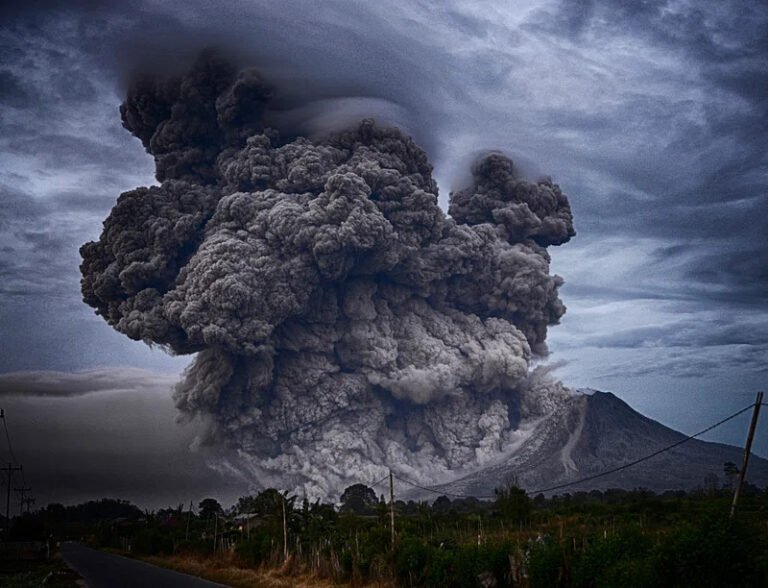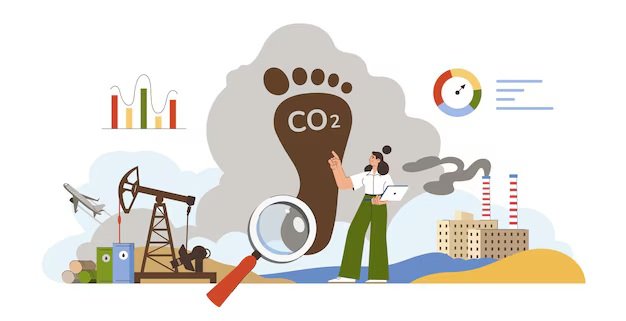What Is Habitat Loss and Destruction? Causes, Examples, and Solutions
Habitat loss is not just an environmental issue—it’s a crisis that affects all life on Earth, including humans. Picture a family losing their home due to a natural disaster or forced eviction; for wildlife, habitat destruction is no different. Every year, countless animals, plants, and even entire ecosystems disappear due to deforestation, urban expansion, agriculture, and industrialisation.
Many people assume this problem is limited to faraway places, but habitat destruction happens everywhere. It’s the draining of wetlands in North America, the clearing of forests in Africa, and the bleaching of coral reefs in Australia. Every time we destroy a natural habitat, we push species closer to extinction, disrupt ecosystems, and even threaten our own survival by accelerating climate change and increasing natural disasters.
Understanding the causes and consequences of habitat destruction is the first step in making a difference. By looking at real-world examples and scientific data, we can see the urgent need for action and learn how to help preserve the delicate balance of nature.

In This Article
- What Is Habitat Loss?
- Causes of Habitat Loss
- Consequences of Habitat Destruction
- Conservation and Sustainable Solutions: Effective Strategies to Combat Habitat Loss and Protect Biodiversity
- How You Can Help
- Conclusion
What Is Habitat Loss?
Habitat loss occurs when a natural environment becomes unlivable for the species that once thrived there. This can happen in several ways:
- Destruction: The complete removal of an ecosystem, such as cutting down forests for farming or mining.
- Degradation: When pollution, climate change, or invasive species damage an environment so much that it can no longer support its original life forms.
- Fragmentation: When large ecosystems are broken into smaller patches due to roads, cities, or farmland, it makes it difficult for species to move and find food or mates.
This destruction is happening at an alarming rate. According to the 2019 Global Assessment Report by the Intergovernmental Science-Policy Platform on Biodiversity and Ecosystem Services (IPBES), around one million species are at risk of extinction due to human activities such as habitat loss, overexploitation, pollution, and climate change. More recently, the 2024 Living Planet Report by WWF and ZSL revealed that global wildlife populations have declined by 73% over the past 50 years, pushing ecosystems toward collapse. The loss of species triggers ripple effects that disrupt entire ecosystems, food chains, and human communities.
Real-World Impact: The Disappearance of Southeast Asia’s Mangroves
Mangroves are among the world’s most valuable ecosystems, providing critical services such as serving as nurseries for fish, protecting shorelines from storms, and storing significant amounts of carbon. However, in regions like Indonesia, Malaysia, and Thailand, these vital habitats are rapidly disappearing.
One of the primary culprits behind this decline is shrimp farming. Over the past few decades, shrimp aquaculture has been a significant driver of mangrove deforestation in Southeast Asia. For instance, in Vietnam, more than 200,000 hectares of mangrove forests have been destroyed due to agriculture and aquaculture for shrimp farming. Additionally, between 1996 and 2020, Southeast Asia experienced a reduction of 2,457 square kilometres (approximately 4.8%) of mangrove cover, largely driven by aquaculture, particularly shrimp farming.
The consequences of mangrove loss due to shrimp farming are profound:
- Biodiversity Loss: Wildlife, such as the proboscis monkey and numerous fish species, lose their habitats, leading to declines in biodiversity.
- Increased Vulnerability: Coastal communities become more susceptible to natural disasters like tsunamis and storms due to the loss of natural protective barriers.
- Climate Change Acceleration: The carbon stored in mangroves is released into the atmosphere when these forests are destroyed, contributing to climate change.
Causes of Habitat Loss
1. Agriculture and Land Conversion
Agriculture is essential for feeding the world’s population, but it often comes at the expense of natural habitats. Forests, grasslands, and wetlands are cleared to make way for crops like soy, and palm oil, and for cattle ranching. This expansion leads to significant habitat destruction and biodiversity loss.
Case Study: The Cerrado, Brazil’s Forgotten Grassland
While the Amazon rainforest often captures global attention, Brazil’s Cerrado biome—a vast tropical savanna—is facing rapid deforestation. As of 2023, deforestation in the Cerrado has increased by over 3% compared to the previous year. Between 1985 and 2023, the Cerrado lost approximately 27% of its natural vegetation, making it one of the most threatened biomes in Brazil. This loss threatens unique species like the giant anteater and the maned wolf.
2. Urbanisation and Infrastructure Development
As human populations grow, cities expand, leading to the encroachment upon and destruction of natural habitats. Urban sprawl, road construction, and industrial development often occur at the expense of forests, wetlands, and other ecosystems.
Personal Story: The Vanishing Lakes of Bengaluru
Bengaluru, India, once boasted nearly 800 lakes that served as water reservoirs and supported diverse wildlife. However, rapid urbanisation has led to the disappearance of many of these water bodies. As of 2021, 837 lakes in the Bengaluru Urban District have vanished, with 88 lakes disappearing entirely, covering an area of 1,307 acres. This loss has resulted in water shortages and reduced biodiversity in the region.
3. Climate Change and Natural Disasters
Climate change exacerbates habitat loss through rising temperatures, altered precipitation patterns, and increased frequency of natural disasters. These changes can render habitats unsuitable for the species that depend on them.
The Melting Arctic: A Vanishing Home for Polar Bears
The Arctic is warming at an alarming rate, leading to the melting of sea ice, a crucial habitat for polar bears. As their hunting grounds diminish, polar bears are forced to venture closer to human settlements in northern Canada and Russia, leading to increased human-wildlife conflicts. Studies predict that the Arctic could be ice-free in summer by 2050, pushing polar bears closer to extinction.
4. Pollution and Resource Exploitation
Industrial activities, mining, and oil spills introduce pollutants into ecosystems, rendering them uninhabitable for many species. These activities degrade habitats and can lead to long-term environmental damage.
Example: The Niger Delta Oil Spills
The Niger Delta in Nigeria, rich in wetlands and fisheries, has suffered extensively from oil spills due to extensive oil extraction activities. These spills have devastated local ecosystems, affecting both wildlife and human communities. A 2011 United Nations report estimated that it could take up to 30 years to clean up the pollution in the region.
Learn More: 20 Biggest Environmental Problems and How to Manage Them
Consequences of Habitat Destruction
1. Species Extinction and Declining Populations
Habitat loss stands as the leading cause of species extinction. A recent global study revealed that 48% of the 71,000 animal species analysed are experiencing population declines. This alarming trend highlights the vulnerability of countless species to disappearing habitats.
2. Ecosystem Disruptions and Food Chain Imbalance
The destruction of habitats like forests and coral reefs doesn’t just impact individual species—it disrupts entire ecosystems. Such disturbances can lead to unpredictable consequences, affecting everything from pollination to water purification. For instance, the loss of apex predators due to habitat fragmentation can result in the overpopulation of prey species, leading to vegetation overconsumption and further habitat degradation.
3. Impact on Human Communities
When ecosystems collapse, human communities suffer. In Africa’s Sahel region, desertification has displaced millions, exacerbating food shortages and sparking conflicts over dwindling resources. As of 2023, over 16 million people in the Central Sahel require assistance and protection, marking a staggering 172% increase since 2016. The number of internally displaced individuals has surged by over 2,400% since 2014, highlighting the severe socio-economic repercussions of environmental degradation.
Conservation and Sustainable Solutions: Effective Strategies to Combat Habitat Loss and Protect Biodiversity
1. Protected Areas and Wildlife Corridors
Establishing protected areas and wildlife corridors is crucial for preserving biodiversity and allowing species to thrive. Governments and non-governmental organisations (NGOs) collaborate to create national parks and corridors that connect fragmented habitats, enabling safe migration and genetic exchange among wildlife.
Example: The Yellowstone to Yukon Conservation Initiative (Y2Y)
The Y2Y is a remarkable conservation effort spanning the United States and Canada, aiming to connect and protect habitats from Yellowstone National Park to the Yukon Territory. Since its inception in 1993, Y2Y and its partners have achieved significant milestones:
- Protected Area Growth: There has been an over 80% increase in key protected areas within the Y2Y region, enhancing habitat connectivity and biodiversity.
- Wildlife Conservation: The initiative has played a pivotal role in conserving species such as grizzly bears, wolves, and caribou by maintaining and restoring their natural habitats.
These efforts have not only benefited wildlife but also supported local communities through ecotourism and sustainable land-use practices.
2. Reforestation and Ecological Restoration
Restoring degraded ecosystems through reforestation and ecological restoration is essential for combating habitat loss. Planting native trees and rehabilitating landscapes can revive lost habitats, improve soil quality, and enhance water retention.
Success Story: China’s Loess Plateau Restoration
Once one of the most eroded regions globally, China’s Loess Plateau underwent a massive restoration project starting in 1999. The initiative aimed to address severe soil erosion and loss of vegetation due to overgrazing and deforestation. Key achievements include:
- Vegetation Cover Increase: Vegetative cover increased from 17% to 34%, significantly reducing soil erosion and improving agricultural productivity.
- Biodiversity Enhancement: The restoration led to the return of various bird species, indicating a revival of the ecosystem.
This project showcases how large-scale ecological restoration can lead to environmental and socio-economic benefits, transforming barren lands into productive ecosystems.
3. Sustainable Agriculture and Responsible Consumption
Adopting sustainable agricultural practices and making responsible consumption choices are vital for reducing habitat destruction.
- Agroforestry: Integrating trees into farming systems supports biodiversity and enhances soil health.
- Certified Products: Choosing products certified by organisations like the Rainforest Alliance or the Forest Stewardship Council (FSC) ensures sustainable sourcing and supports conservation efforts.
Consumers can drive positive change by supporting sustainable practices and reducing the demand for products linked to habitat destruction.
4. Community Involvement and Indigenous Leadership
Local communities and Indigenous peoples possess invaluable knowledge of sustainable land management. Their involvement is crucial for effective conservation strategies.
Example: Indigenous Guardians of the Boreal Forest
In Canada, Indigenous communities play a leading role in conserving the vast Boreal forests. Through traditional ecological knowledge and modern conservation techniques, they:
- Monitor Ecosystems: Indigenous Guardians actively monitor wildlife populations and forest health, providing critical data for conservation planning.
- Promote Sustainable Practices: They implement land-use practices that balance ecological integrity with community needs, ensuring the forest’s health for future generations.
This approach not only preserves biodiversity but also strengthens cultural ties and supports Indigenous livelihoods.
Learn More: What is Human-Environment Interaction?
How You Can Help
| Action | Impact |
|---|---|
| Support reforestation projects | Helps restore wildlife habitats |
| Reduce meat consumption | Lessen deforestation for livestock |
| Buy sustainably sourced products | Reduces demand for habitat-destroying industries |
| Support conservation organizations | Funds habitat protection efforts |
| Raise awareness | Educates others about the issue |
Conclusion
Habitat loss is a global crisis, but it’s not an unsolvable one. Through sustainable choices, policy changes, and conservation efforts, we can restore and protect the world’s most valuable ecosystems. Whether you’re an individual making ethical choices or a policymaker influencing large-scale change, every action counts.
By spreading awareness and taking direct action, we can ensure that future generations inherit a world rich in biodiversity and natural beauty. The fight against habitat destruction is a fight for life itself—let’s all do our part.







